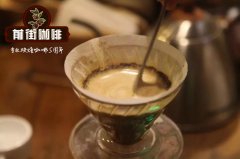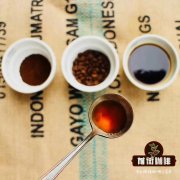Ethiopian coffee beans knowledge what kind of coffee can be called Yega Xuefei?

Professional coffee knowledge exchange more coffee bean information please follow the coffee workshop (Wechat official account cafe_style)
Yejashafi coffee beans, the earliest definition is produced in Ethiopia, a coffee bean called the town of Yegashafi.
Most coffee fans are probably no stranger to Ethiopia, the birthplace of Arabica and one of the most important native / wild coffee gene pools in the world. Most of the production patterns are presented in the form of small farmers' cooperatives. The season is from October to December each year.
Yirgacheff is the most famous producing area in Ethiopia, located in a small producing area in the Gedeo region of southern Ethiopia, where coffee beans are harvested from local small coffee farmers, which can be said to be a collection of the painstaking efforts of many small coffee farmers. At first, Yejashafi coffee beans are not impressive, because the small beans do not conform to the popular idea that size is beauty, but coffee lovers who have drunk Yega Xuefei are astonished. Coffee can have such an obvious floral aroma and lemon and citrus flavor, impressive. As a result, Ethiopia's Yega Xuefei has become more and more famous, riding the third wave of boutique coffee beans.
Yejashafi is not only the most popular item of boutique coffee, but even Starbucks coveted the name; in 2004, Starbucks tried to register "Yejashafi" as its brand trademark. this angered Ethiopian authorities and coffee lovers around the world. It was not until 2007, when the Ethiopian government filed an international lawsuit, that the name of Yejasuefi coffee was liberated.
However, what people are talking about now is actually not entirely referring to the place of Yega Xuefei.
If you look at the map, you will find that the real Yega Xuefei is just a small town.
Because the flavor of Yejia Xuefei is so special and very popular.
So Ethiopia's definition of "Yega Xuefei" is not just the concept of origin. Under the trading system classification of ECX in Ethiopia, Yejasuefei is not only produced by the town of Yegashefi, but also officially recognized in Ethiopia as Wanago, Yirgacheffe, Kochere and Gelena Abaya legal area.
It means that the coffee is not produced in the town of Yega Sheffiben, but it may also be called Yega Sheffield!
(what? it's good to forgive)
Important Notice :
前街咖啡 FrontStreet Coffee has moved to new addredd:
FrontStreet Coffee Address: 315,Donghua East Road,GuangZhou
Tel:020 38364473
- Prev

How is Ethiopian coffee traded? introduction to the price of Ethiopian coffee beans.
For more information on coffee beans, please follow coffee workshops (Wechat official account cafe_style) according to the Ethiopian decree, there are three coffee export systems, (1) the largest privately owned processing plant system for export through competitive ECX, (2) the cooperative system, and (3) the single farm system. In these three systems, cooperatives and single manors are not thorough.
- Next

Are Ethiopian coffee beans suitable for hand brewing? How do Ethiopian coffee taste good?
Professional coffee knowledge exchange more coffee bean information please follow the coffee workshop (Wechat official account cafe_style) Ethiopia Jima Akmanu calendar solarization (organic certification) Ethiopia Jimma Akmel Nuri natural (organic certificated) producer: Ethiopia Ethiopia producing area: Limu Kosa; Jima Jimma producer
Related
- Beginners will see the "Coffee pull flower" guide!
- What is the difference between ice blog purified milk and ordinary milk coffee?
- Why is the Philippines the largest producer of crops in Liberia?
- For coffee extraction, should the fine powder be retained?
- How does extracted espresso fill pressed powder? How much strength does it take to press the powder?
- How to make jasmine cold extract coffee? Is the jasmine + latte good?
- Will this little toy really make the coffee taste better? How does Lily Drip affect coffee extraction?
- Will the action of slapping the filter cup also affect coffee extraction?
- What's the difference between powder-to-water ratio and powder-to-liquid ratio?
- What is the Ethiopian local species? What does it have to do with Heirloom native species?

